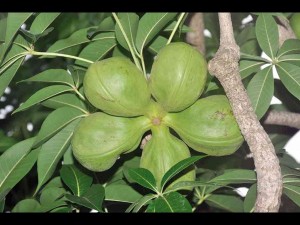Smelly flowers from bangar tree spoil Hundred Islands

A tree that thrives at Hundred Islands National Park in this city is spoiling the beauty of this tourist destination in western Pangasinan province.
ALAMINOS CITY—A tree that thrives at Hundred Islands National Park in this city is spoiling the beauty of this tourist destination in western Pangasinan province.
The bangar nut tree has yellow and red flowers that discharge a strong, unpleasant odor that many visitors to the islands, particularly Quezon Island, complain about.
Visitors assume that the stench that greets them in some areas comes from human waste or decaying animals.
But it is actually the leaves and the flowers of the bangar trees (also called the Indian almond) that emit the foul odor, said Mike Sison, tourism officer of Alaminos City.
Bangar trees (Sterculia foetida) grow in other islands, too, as these are hardy and grow anywhere near the sea, including in crevices of rocky islands, Sison said.
Article continues after this advertisementThe tree’s scientific name says it all: The Latin word “stercus” means dung or manure, while “foetidus” means fetid or foul-smelling.
Article continues after this advertisementWhat’s more annoying is that the tree blooms from March to May, considered the peak season for tourism here, Sison said.
He said it is hard to clear the islands of the trees, as these grow fast, propagated by birds and bats that feed on them in the 123 islands and islets in the park.
“Besides, a permission from the Department of Environment and Natural Resources may be needed if any of these trees would be cut,” Sison said.
Ismael Najera, a resident here, said the bangar trees have fruits that contain up to 15 edible nuts.
“When we are on the islands and we get hungry, we eat the nuts. But the nuts should be eaten in moderation because they can upset your stomach,” he said.
Trees on the islands are stunted and grow up to 5 meters high only due to the absence of freshwater, Najera said.
He said shells of bangar nuts are collected and turned into decorative items. Yolanda Sotelo, Inquirer Northern Luzon